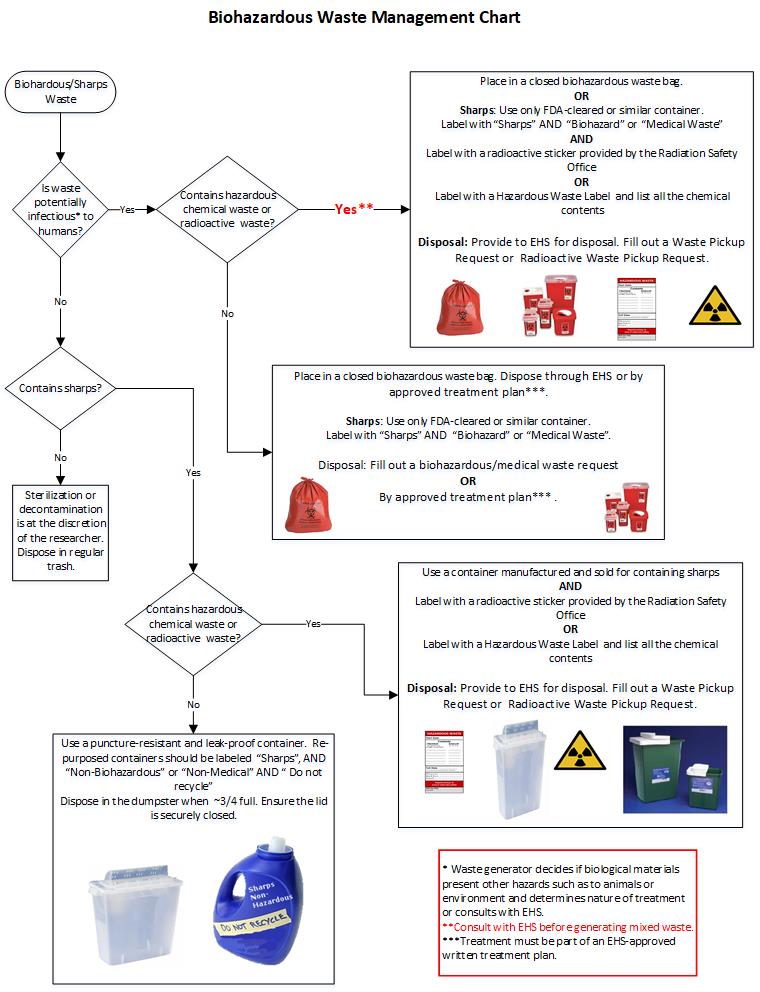Tailored Medical Waste Disposal Service: Satisfying Healthcare Compliance Requirements
Wiki Article
Lasting Solutions for Medical Garbage Disposal
The proper administration and disposal of medical waste is vital in maintaining a sustainable and safe healthcare system. This intro will explore numerous sustainable remedies for medical waste disposal, consisting of waste partition and sorting, on-site waste therapy systems, recycling and reuse programs, waste-to-energy conversion technologies, as well as cooperation and education and learning initiatives.Waste Partition and Sorting
The procedure of waste partition and sorting is vital in guaranteeing correct monitoring and disposal of medical waste. Clinical waste is classified into various groups based on its prospective risk to human wellness and the environment. Proper partition and sorting of waste aid to reduce the danger of contamination and make certain that each type of waste is managed and thrown away suitably.The initial step in waste segregation and sorting is to determine and divide various kinds of medical waste at the point of generation. This includes identifying the numerous categories of waste, such as contagious waste, sharps waste, pharmaceutical waste, and chemical waste. medical waste disposal service. Each group calls for specific dealing with and disposal methods to avoid damage to health care workers, individuals, and the setting

On-site Waste Treatment Systems
Proceeding from the previous subtopic on waste partition and sorting, a reliable solution for lasting medical garbage disposal is the implementation of on-site waste treatment systems - medical waste disposal. These systems allow healthcare centers to treat their clinical waste on-site, minimizing the requirement for transportation and disposal at off-site facilities. On-site waste therapy systems normally include technologies such as autoclaves, microwave systems, or chemical sanitation systemsAutoclaves, typically used in medical care settings, use high-pressure vapor to sanitize and treat clinical waste. This process properly kills microorganisms, infections, and other possibly harmful bacteria, making the waste safe for more handling and disposal. Microwave systems, on the other hand, usage microwave radiation to heat and treat the waste, attaining similar outcomes to autoclaves.
Chemical disinfection devices involve using chemicals to disinfect and treat medical waste. These devices can utilize numerous disinfectants, such as chlorine-based options, to neutralize virus and decrease the threat of contamination. The treated waste can then be securely thrown away in regular waste streams or go through further therapy, such as shredding or incineration.
Implementing on-site waste treatment systems uses several advantages. It minimizes the environmental effect connected with carrying clinical waste to off-site centers, reducing carbon discharges and the threat of mishaps throughout transport. In addition, it gives medical care facilities with more control over the therapy procedure, ensuring compliance with guidelines and reducing the capacity for unauthorized access to delicate clinical waste.
Recycling and Reuse Programs
To additionally boost lasting clinical garbage disposal methods, medical care centers can implement recycling and reuse programs, developing upon the structure of on-site waste therapy systems. Recycling and reuse programs provide an extra layer of ecological duty by drawing away clinical waste from land fill and finding alternate uses for specific products.One secret element of reusing and reuse programs is the partition of waste at the resource. medical waste disposal. By applying proper waste segregation protocols, health care centers can divide recyclable products, such as plastics, steels, and glass, from non-recyclable waste. This permits for the reliable recycling of these products, reducing the need for virgin resources and minimizing the environmental effect of medical waste disposal
Along with reusing, medical care centers can discover possibilities for recycling particular clinical products. Single-use items like surgical drapes and dress can be disinfected and recycled, decreasing the need for new products and lessening waste generation. Recyclable sharps containers can likewise be employed, reducing the quantity of plastic waste created from disposable containers.
Implementing recycling and reuse programs calls for correct facilities and training - WasteX Medical Waste Disposal. Healthcare centers must purchase proper recycling containers, segregation systems, and sanitation equipment, in addition to make sure team are informed on proper waste administration practices
Waste-to-Energy Conversion Technologies
One possible approach to resolve medical waste disposal sustainably is through the application of waste-to-energy conversion technologies. These modern technologies offer an encouraging solution to the growing problem of medical waste, which poses considerable ecological and public health and wellness risks. Waste-to-energy conversion includes converting the organic parts of medical waste into power, such as warm or electrical power, via different procedures like incineration, pyrolysis, and gasification.Incineration is the most frequently used waste-to-energy innovation for clinical waste disposal - WasteX Medical Waste Disposal. It includes the regulated burning of waste at high temperature levels, transforming it right into ash, gases, and heat. This heat can be used to generate heavy steam, which can then be converted into electrical power
Pyrolysis and gasification are more recent technologies that offer more eco-friendly options to incineration. Pyrolysis includes heating up the waste in the absence of oxygen, leading to the manufacturing of gases and char. Gasification, on the other hand, converts waste into a synthetic gas or "syngas" that can be used as a i loved this gas for electricity generation or various other commercial procedures.
These waste-to-energy conversion modern technologies not just minimize the volume of medical waste but likewise give a resource of renewable resource. Additionally, they can help in reducing greenhouse gas discharges and dependence on fossil gas (WasteX Medical Waste Disposal). It is essential to guarantee that these technologies are carried out with proper exhausts manage actions to lessen any potential adverse effects on air top quality and public health and wellness.
Cooperation and Education Campaigns
Partnership amongst stakeholders in the medical care market is crucial for applying sustainable options for medical waste disposal. In order to properly deal with the difficulties related to medical waste administration, it is essential for health care centers, waste management business, regulatory authorities, and other pertinent celebrations to collaborate.
In addition, education and learning campaigns play an essential duty in advertising lasting methods. Health care experts need to be knowledgeable about the environmental impact of improper waste management and the importance of applying lasting options. Training programs and educational materials can aid them comprehend the appropriate segregation of waste, the usage of eco-friendly choices, and the advantages of waste-to-energy conversion innovations.
Collaboration and education and learning can additionally facilitate the growth of guidelines and standards for medical garbage disposal. By interacting, stakeholders can add to the development of detailed policies that ensure secure handling, transportation, and therapy of clinical waste.
Conclusion
In verdict, embracing sustainable remedies for medical garbage disposal is crucial in order to lessen the negative effect on the environment and public wellness. Waste segregation and sorting, on-site waste therapy systems, recycling and reuse programs, waste-to-energy conversion technologies, and cooperation and education campaigns are very important techniques to achieve this goal. Carrying out these services calls for collaboration in between healthcare facilities, waste monitoring companies, and federal government firms, in addition to continual education and understanding projects.The process of waste partition and sorting is essential in making certain proper management and disposal of clinical waste.The initial step in waste segregation and sorting is to determine and divide different types of clinical waste at the factor of generation. This entails recognizing the different groups of waste, such as infectious waste, sharps waste, pharmaceutical waste, and chemical waste.Continuing from the previous subtopic on waste partition and sorting, a reliable solution for sustainable medical waste disposal is the implementation of on-site waste therapy systems. The cured waste can after that be securely disposed of in regular waste streams or undergo additional therapy, such as shredding or incineration.
Report this wiki page